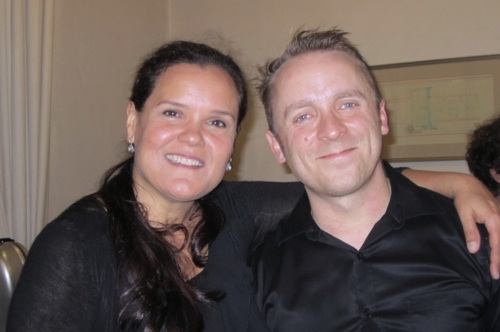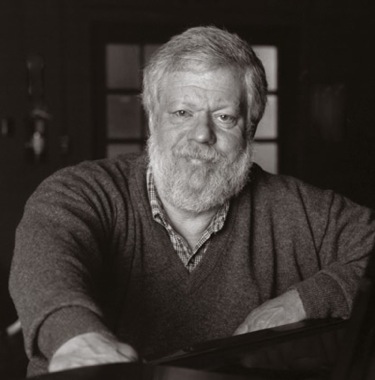
Monumental program, distinguished atmosphere
Strains of Shostakovich and major 7th chords ran through a powerful evening at the Berkeley City Club on Tuesday, September 13. Under the auspices of Berkeley Chamber Performances, that south campus Julia Morgan-designed building played host to a wondrous trio—violinist Candace Guirao, cellist Robert Howard and pianist Miles Graber.
Their program consisted of three difficult master works, any one of which could anchor a program of lighter fare. Having the three on one program was exhilarating. They began with the most modern, Jennifer Higdon’s Piano Trio, a two-movement work that combines classical form with a wild ride.
Higdon, America’s most-programmed living composer, wove an enchanting web in “Pale Yellow,” the first movement. Graber eased us into the evening, dotting the air with paced notes, a major triad, then filled in the sound with accidentals for luminous dissonance.
Guirao and Howard entered in low murmurs, and then Guirao took the melody, though “melody” is not quite the right word. Higdon’s phrases are full of emotion, but her motifs are usually more harmonic than melodic. But here, a violin’s slow cascade of intervals created a fairy-tale staircase, a sense of light peeking through a vale. As the others joined, the rich fabric sounded like Brahms, the sweetness of remembered joy, and of regret.
But Higdon’s second movement, “Fiery Red,” is the direct opposite. The strings scrubbed out blistering sixteenths, and one could hear the violence of a Shostakovich, perhaps the angry and fearful Quartet No. 8, in rising string phrases and breaking waves of piano notes. Graber filled in, after a wrist injury to the original member of the trio, with only two weeks to learn the difficult score. Taciturn and thick-fingered, it is always a surprise to hear his delicacy. And here his clean diction gave those long runs luster. They cycled through staccato attacks and string pizzicatos, then slowed for a “spectral” violin line, and then back to fierce bowing, crabbing up a strangely bright scale with the driving repetition and powerful rhythmic unity of Khachaturian on meth. It was, in a word, formidable. And perhaps out of place in Julia Morgan’s delicate 80-year-old castle.
But then came Maurice Ravel’s Sonata for Violin and Cello, completed just eight years before the room in which we sat, and Ravel’s refined steel and bits of jazz, played in a Beaux-Arts Hall, defined the cultural divide of that time. Indeed Ravel, who hated to be defined as an “impressionist,” contained both sides within himself, classicist and anarchist.
Cellist Robert Howard commented, “It is a total masterpiece, based on two ideas throughout—alternating major and minor, and descending seventh chords.” Howard gave us open arpeggios, and Guirao winged slowly across them. There is a thin thirst to the opening, almost gull cries and fish stink. The duo traded lines, with cello bridging counterpoint to a livelier discourse. Then Guirao soloed with warmth and clarity, and I was struck by how those are antipodes—usually one has warmth or clarity. This was an unusual and generous moment. Howard’s tone rose to an earthy grace, and their last chords lingered to tease the air.
The second movement was exaggerated almost to bragging, and the Lento followed, quoting the opening motifs. Here, muted violin intervals played against cello chromatics for a tangier texture. Their delivery became deeply internal, as each immersed their sounds in the other. It is a curious work, with an almost-violent ending, a sense of Ravel’s impatience with both older forms and younger novelties.
Graber rejoined them after intermission for Brahms’ monumental Trio in B Major, Op. 8, a work that he published in 1854 at the age of 21, but then revised extensively and re-published in 1891 when he was 58! Graber remarked that, “you can see why he rewrote it. The original version is long-winded and he deleted a lot. It is much more focused.”
These performers were on their game: great blend, focused dramatic intention and unabashed romanticism. And it all came together in the Adagio, with sublime chord progressions making way for a yearning cello solo. And then a return to the thicker sweep of the final movement.
—Adam Broner
Photo top of Candace Guirao and Robert Howard after the concert; photo by Aisha Khan; photo bottom of Miles Graber.
The San Francisco Guitar Quartet comes to the Berkeley City Club Tuesday, Nov 8 at 8 p.m. for a concert ranging from classical to improvised jazz.
